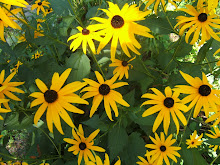
Seeds: Fresh seeds bought from a reputable company will usually germinate the most quickly and evenly. Older seeds can sprout, but best results will come from this year's seed.
Soil: Buy a good quality starter mix - it makes a difference. A heavy soil will inhibit growth and can result in die-off so go with one that has enough peat to keep it light. African violet soil is usually a good bet, but most of the name brand starter mixes work well. Peat pucks also do a good job especially for planting larger seeds, one per puck.
Containers: Lots of different containers work just fine. I save plastic margarine and large yogurt containers, and clear plastic lidded containers from the bakery department. Regular 4" plastic pots can be handy or you can buy the multi-celled units. For plants that dislike transplanting (cucumbers, squashes, some flowers), peat pots are ideal. The only essential for containers is that they have good drainage holes in the bottom.
Light: Light is one of the trickier aspects to manage. If you have grow lights, they work really well, but they need to be somewhere that is also warm. A south-facing window is next best but, at this time of year, it's a good idea to move the plants away from the window in the late afternoon so the plants don't get chilled.
Water and fertilizer: Once the seeds have sprouted, be careful not to overwater to avoid damping off and leggy plants. Water from the bottom, if possible, and try to time it for a sunny day when the plants will be most active. Some soil has fertilizer in it, in which case, no more is needed. If you do fertilize, use no more than half-strength once a month. You want short sturdy plants.
Special tips for better germination: Always read the directions on the seed packet as some seeds need light, others darkness. Pay attention to the temperature requirements suggested. As a rule, seeds germinate best in warm temperatures : 20-30C with plenty of moisture. I give the potting soil a good soaking before I plant the seeds and cover the container with plastic wrap or lid. On a sunny day, I'll let the sun shine right on it to get everything nice and warm, possibly removing the plastic around midday if it seems to be heating up too much, but putting it back later in the afternoon to capture the heat. If it's not sunny, I find the warmest place in the room for the seeds, which is usually somewhere high, like the top of the fridge.
Once a group of seeds germinates, take the plastic off. Now the job is to get the soil to dry down and to give the seedlings maximum light. I like to have a fan nearby to increase air circulation to minimize damping off. The moving air also makes for stronger seedlings.
Transplant to individual pots (or with small plants space out in container) when the seedlings have 2-4 sets of true leaves. A transplanting fertilizer with a high(52) middle number will give them a boost, but it's not necessary.


It's a tad too early for me to start seeds but I DO look forward to it! Thanks for the tips.
ReplyDelete